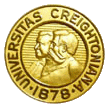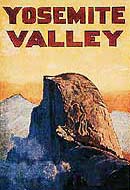|
Feb. 5, 1996
Rise of The American Law Review
is Almost Legendary
By Professor Berenard Hibbits
The standard story of the rise of the American
law review is so familiar as to be almost legendary.
In 1887, after attempts to create a student-edited
law journal at Albany and Columbia had already failed,1
a group of ambitious students at the Harvard Law School - among
them the future legal scholars John Wigmore and Joseph Beale -
approached Professor James Barr Ames2
of the Harvard law faculty to suggest the inauguration of a school-sponsored
legal periodical that would contain not only student-written essays
and case comments, but also scholarly papers contributed by Harvard
law professors and other prominent members of the bar.
The students hoped that in addition to
providing a new platform for legal scholarship, such a periodical
would spread the word about the Harvard Law School, and especially
about the case-method that they and their faculty mentors were
pioneering. Seeing the wisdom of the proposal, Ames agreed to
act as the law review's advisor and first contributor.3
The newly-formed Harvard Law School Alumni Association provided
significant financial backing, and the Harvard Law Review
was born.
The Review proved so successful
that it soon spawned imitators among other American law schools
that aspired to Harvard's growing status and prestige.4
Within a few decades, the law review had become a fixture
of the American legal landscape, with dozens of law reviews in
publication, and many more on the way.5
[1.2] As
a rendition of specific facts, this story is not inaccurate, but
as an explanation of the initial development and popularization
of the law review it is nonetheless inadequate. It has two fundamental
failings.
First, in focusing (however understandably)
on the particularities and personalities of Harvard, it downplays
the extent to which the law review served the general interests
of the university-based law school as an institution seeking to
advance itself in late nineteenth and early twentieth century
America; even as confined to Harvard, it presents the law review
as the creature of narrow legal considerations where there is
at least circumstantial evidence to suggest that broader scholarly
concerns might also have animated Ames, the colleagues who supported
him, and perhaps his precocious band of law students.
Second, the traditional story totally
disregards contemporary technological developments in the printing
and publishing industry that in the late nineteenth century made
law school sponsorship of legal periodicals conceptually plausible
and financially practicable for the first time.
As a result of these two shortcomings,
the law review has been portrayed more as a happy serendipity
or a legal peculiarity than as a complex but rational product
of its time. In the remainder of this section I will argue for
the last of these interpretations.

...the law review has been
portrayed more as a happy serendipity or a legal peculiarity than
as a complex but rational product of its time.

[1.3] In late
nineteenth and early twentieth century America, university-based
law schools were not nearly as populous, powerful and prestigious
as they are today. They were admittedly not new - law had been taught
at Harvard as early as 1815, and the university had operated a separate
law school since 1817.6
Neither were university-based law schools all that rare any more;
by the late 1880s, there were over 45 of them.7
For all their age and their numbers, however, the schools were,
by and large, marginal institutions. They were marginal professionally:
universally into the 1890s, and in many regions of the country through
the 1900s, most American lawyers still received their education
by the more traditional means of apprenticeship.8
In this context, formal legal education was seen (at best) as a
supplement to office training, not a substitute for it.9
University-based law schools were also marginal academically. Many
(such as Harvard) existed on the intellectual and physical outskirts
of university campuses. Most counted for little in their universities'
overall academic reputations,10
and sometimes for less in their budgets.11
[1.4] In this context,
ambitious law professors sought ways to advance their institutions,
their students and themselves. They had several implicit (and sometimes
explicit) goals. First, they wanted to provide their students with
a superior form of legal training that would positively distinguish
the latter from students trained only in law firms.12
Second, they wanted to develop their ties with the practicing bar
in a way that would increase the legitimacy of their schools and
enhance their own reputations in the professional legal community
which they served and in which most of them still worked part-time.
Third, they wanted to strengthen their connection with alumni whose
support promoted law school solvency, professional goodwill and
the employment of law graduates.13
Fourth, they wanted to improve their academic status in their respective
university settings.
[1.5] While legal academics
were pursuing these goals, contemporary publishing technology was
changing. In the last decades of the nineteenth century, new high-speed
rotary printing presses came into general use.14
At the same time, paper-making processes accelerated thanks to the
widespread substitution of ground woodpulp for rags.15
Together, these developments pushed printing and paper costs to
unprecedentedly low levels.16
Taking advantage of the savings, established and new publishers
flooded a waiting American market with inexpensive books and magazines.
In 1880, 2076 new books were published in the United States; in
1884, over 4000; in 1895, over 5400.17
There were approximately 3300 American periodicals in publication
in 1885; by 1890 that number had risen to more than 4400; by 1895,
there were approximately 5100 being produced across the country.18
The explosion in the available volume of printed matter became the
subject of public comment, and even public concern. In 1895, the
editor of The Nation observed that the "multiplication
and cheapening of periodical literature within the past five years
have been extraordinary."19
In 1896, the editor of another journal concluded (somewhat ironically,
perhaps), that "this is a book-enslaved generation. Too many
books, too many newspapers, too many magazines - too little reflection,
too little originality."20

In the last decades of the nineteenth
century....established and new publishers flooded a waiting American
market with inexpensive books and magazines.

[1.6] Law was
hardly immune from the lure of cheap print. The number of new law
books - and reprints of old ones - published each year hit record
levels in the 1880s and 1890s.21
In 1880, 62 new law books were published in the United States; in
1882, 261; in 1889, 410; in 1896, 507.22
Lawyers inevitably complained about the burgeoning mass of texts
and precedents. In 1882, Chicago attorney J.L. High, writing in
the American Law Review, called the increase in materials
"appalling": "so far from strengthening the foundations
upon which our jurisprudence as a system is based, [it] has a well-defined
tendency to weaken them by the substitution of precedents for principles
in the practical administration of justice."23
For fear of missing something important or being at a disadvantage,
however, most lawyers continued to buy and stock as many new
law books as they could afford.
[1.7] The new technology
lowered the cost of printing legal periodicals to a point where
they could be sponsored by relatively impecunious law schools.24
The flood of periodicals which the new technology facilitated
also helped to create an intellectual and cultural environment
in which publishing a periodical seemed unremarkable, even for
law schools that would not previously have considered such an
ostensibly-ambitious and even pretentious undertaking. The fact
that a school- sponsored law journal might be feasible and credible,
however, was not enough to ensure that such an experiment would
actually be attempted. That final step required purpose as well
as opportunity.

...new technology lowered the cost
of printing legal periodicals to a point where they could be sponsored
by relatively impecunious law schools.

[1.8] Unfortunately,
there is precious little before-the-fact evidence of precisely which
positive factors prompted law professors in a significant number
of American law schools to support the inauguration of school-sponsored
law reviews in the late nineteenth and early twentieth centuries.
Contemporary circumstances and the range of formal, after-the-fact
justifications for publication strongly suggest, however, that law
professors at these schools believed that law reviews were capable
of advancing their aforementioned institutional and personal goals
in a variety of ways. First, a law review could further the legal
education of law students.25
At the most general level, law students reading their school's law
review would presumably benefit from the writings of their professors,
and perhaps also their student colleagues. If law students were
actually put in charge of a law review, its educational and ultimately
professional value to them would be greater still. Acting as editors,
they would gain by evaluating and polishing the contributions of
law professors and practitioners. As contributors in their own right,
their attention would be focussed on recent developments in the
case law, and they would gain proficiency in legal analysis, research
and writing. Insofar as few if any of these opportunities were available
to apprentices working in law firms, working on a law review would
make law school graduates uniquely capable in an American legal
environment increasingly saturated with printed precedents, statutes
and texts.26 As
a result, those graduates would be more attractive to potential
employers, and the schools and professors that produced them would
gain prestige and profit.
[1.9] Coincidentally,
making law school graduates more attractive to law firms by virtue
of the formers' experience on school-sponsored law journals offered
a way to strengthen the connection between law schools and the
bar.27 Not only
could a student-edited law review provide the bar with a pool
of specially-trained recruits, but - assuming it were staffed
by the law students with the highest grades - it could also provide
a convenient criterion by which hiring attorneys could identify
the best and the brightest law graduates. This criterion appeared
increasingly attractive once schools such as Harvard eliminated
the formal "Honors" programs which had once served the
same "streaming" function.28
With or without student editing, a school-sponsored law journal
could provide practitioners with a useful professional service29
- first, an additional medium through which they could communicate
with other practitioners, and second, a source from which they
could regularly glean information on new cases, new legislation,
and the broader implications of those. At a time when the bar
was being buried with more printed information and material than
it could readily assimilate, this latter function was potentially
critical: a law review could serve as a law digest, potentially
saving busy practitioners both time and the money they would otherwise
have spent on rapidly-outdated treatises, reports and statutes.
Of course commercial legal journals and digests were already available,
but the mass of information descending on the American legal community
at the turn of the century was such that more law journals offering
analyses, updates and reviews were always welcome. A law school
that chose to publish such a journal could gain increased professional
recognition and influence, as could the law professors whose writings
appeared in its pages.

The fact that a school-sponsored law
journal might be feasible and credible, however, was not enough
to ensure that such an experiment would actually be attempted.
That final step required purpose as well as opportunity.

[1.10] Third,
a law review could address a law school's institutional need to
gain and keep the support of alumni by providing a product that
would bring news of the school to their attention on a regular basis.
More pro-actively, it could also provide a forum in which they could
publish, correspond and generally maintain ties with one another.30
A school-sponsored law journal promised to be particularly useful
as a bonding mechanism when (as was already the case in a number
of prominent instances in the late nineteenth century) a law school's
graduates were scattered over a broad geographical area, limiting
the opportunities for face-to-face meeting and regular conversation.
Of course, the more that alumni felt connected to each other and
to their alma mater, the more likely they would be to hire their
alma mater's graduates, send their own sons (and even daughters)
there, recommend the school to friends, and (most importantly) contribute
to its coffers.
[1.11] Finally, a
school-sponsored law journal could enhance a law school's academic
and scientific reputation. In late nineteenth century America,
the focus of the academic community was starting to shift from
teaching to scholarship. The German model of post-secondary education
that was becoming increasingly influential in the United States
around this time encouraged universities to re-invent themselves
as producers (as opposed to merely conveyors) of research and
learning that would stimulate progress and reform.31
In 1876, Johns Hopkins University was established as the first
American "research university." Consistent with the
new emphasis on research, academics in a wide range of disciplines
turned to writing. Universities and learned societies created
numerous journals to contain the new scholarship, which could
not be absorbed (and in many instances would not have been accepted)
by then-existing commercial or learned periodicals.32
The declining cost of print facilitated and further stimulated
this process. The last quarter of the nineteenth century witnessed
the birth of such scholarly stalwarts as the American Journal
of Mathematics (1878), the American Chemical Journal
(1879), the American Journal of Philology (1880), the Journal
of the American Medical Association (1883), the Political
Science Quarterly (1886), Modern Language Notes (1886),
the American Journal of Psychology (1887), the Journal
of Political Economy (1892), the American Historical Review
(1895), the Journal of Physical Chemistry (1896), and the
American Journal of Sociology (1896). Ultimately, a variety
of universities set up their own presses to facilitate the distribution
of their faculties' research products. Predictably, Johns Hopkins
led the way in 1891, followed by Chicago (1892), Columbia and
the University of California (both in 1893).33
All this activity created an environment in which intellectual
respectability was increasingly associated with the sponsorship
of journals and the practice of publication.34
In this context, the inauguration of a school-sponsored law review
could offer a university-based law school an unprecedented academic
opportunity. As the patron of a "learned" journal providing
a needed forum for its faculty's scholarship35
outside the traditional confines of treatises36
and commercial legal periodicals37,
it could at last make common academic cause with other progressive
departments and professional schools on its campus (even if its
own journal were student-edited).38
Even more fundamentally, it could demonstrate that the law was
amenable to "scientific" study,39
and that a law school belonged in the university.

As the patron of a "learned"
journal,...a law school could at last make common cause with other
progressive departments and professional schools on its campus.

[1.12] Of course,
it was not altogether accidental that students and professors at
the Harvard Law School were the first to realize the law review's
potential. James Barr Ames, the Harvard Law Review's principal
faculty supporter, was the first of a new breed: the fully-academic
law professor with minimal practical experience, appointed in the
expectation that he would devote his career to teaching and scholarship.
40
Ames had begun scholarly work (mostly in legal history) soon after
joining the Harvard law faculty, but prior to 1887, he lacked an
obvious outlet for that work in the contemporary legal journals.
41
His Dean and mentor, Christopher Columbus Langdell, had developed
a new pedagogical method - the case method - that he, Ames, and
their law students were anxious to celebrate and publicize.42
Both Ames and Langdell were operating in the midst of a university
that under the leadership of President Charles Eliot had taken a
backseat only to Johns Hopkins in its emphasis on research and publication
(and Johns Hopkins, of course, did not have a law school).
43
The Harvard Law School had established its own Alumni Association
in 1886, and was looking for a means of keeping in touch with graduates
already scattered across a wide variety of American, and even foreign
jurisdictions.
Last but not least, the same Alumni Association
- dominated by well-off Boston and New York lawyers - had access
to significant financial resources and was willing to use those
resources to advance the Law School's interests.
44
In these circumstances, the student proposal to create a law review
seemed especially sensible and attractive.
45
At least some of Harvard's ambitions for its review were explicitly
articulated in a note to the first issue (written, of course, by
the student editors): "Our object, primarily, is to set forth
the work done in the school with which we are connected, to furnish
news of interest to those who have studied law in Cambridge, and
to give, if possible, to all who are interested in the subject of
legal education, some idea of what is done under the Harvard system
of instruction. Yet we are not without hopes that the Review may
be serviceable to the profession at large."46

...the rapid proliferation of law
reviews in the late nineteenth and early twentieth centuries should
not be considered as a mere instance of "following the leader."

[1.13] Ultimately
the attraction of the school-sponsored law journal was such that
shortly after the launching of the Harvard Law Review, other
journals began to appear under the sponsorship of other law schools.
The example and success of Harvard were
certainly factors in this trend,47
but the rapid proliferation of law reviews in the late nineteenth
and early twentieth centuries should not be considered as a mere
instance of "following the leader".
48
Some of the same concerns and interests that in the context of improved
print technology had apparently urged the Harvard law students and
faculty towards journal publication also spoke to students and legal
scholars elsewhere.
49
In 1891, for example, the editors of the new Yale Law Journal
launched their effort with these words: "the graduates of the
Yale Law School...have lacked the esprit de corps, which is necessary
for effective unity. The formation of the Alumni Association was
a step in the right direction. The Law Journal is intended to be
another. It provides a common means of communication between the
graduates and the students, and its success should be a mark of
the vitality of the school."50
In 1917, the Minnesota Law Review opened its first issue
by observing that "the present position of the typical law
school, as compared with the medical school, is discreditable to
the former; its influence with the profession is not what it ought
to be. The law review is one of the means by which the law school
may make its influence...felt....".51
Over time, the focus of justification for new law reviews changed
subtly as law schools gained prestige (making bold declarations
of institutional ambition superfluous), alumni relations came to
be fostered through other channels (making that purpose of law review
publication less important), and not publishing a law review became
more remarkable than publishing one (making justifications as a
whole less necessary, or at least less lengthy).
Functionality, however, continued to be
seen as the key to a review's potential success: as the editors
of the George Washington Law Review explained in their first
issue, produced 45 years after Harvard's: "Publication of a
law review by any school is justified by the additional contributions
to legal literature which it stimulates and the opportunities for
better training to students which it affords."52
[1.14] This brief
history of the initial development and popularization of the law
review suggests that the law review was very much the product
of its times53
- in particular, the product of a conjunction of contemporary
academic circumstances and then-current technological advances.
Insofar as it had emerged in response
to perceived goals, it was potentially vulnerable to criticism
as it tried to fulfill those goals, and as those goals evolved.
In the next section of this paper I will
trace the course that criticism of the law review has taken over
the years, I will investigate why various criticisms arose when
they did, and I will examine the structural and substantive reforms
that have attempted to preserve or advance the law review's position
in the ever-changing American legal academy.
|
![]()
![]()
![]()






